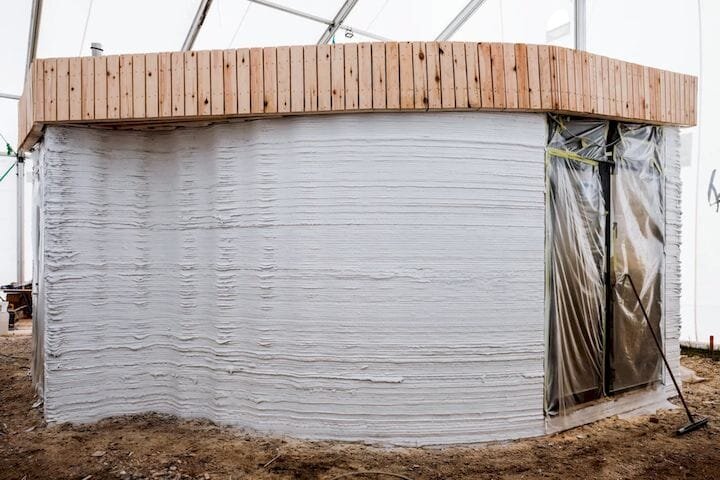![An experimental 3D printed concrete building [Source: COBOD]](https://fabbaloo.com/wp-content/uploads/2020/05/image-asset_img_5eb08c78a3d6c.jpg)
I’m not happy, and it’s because of ongoing sensationalist coverage of construction 3D printing.
I and others have written about this countless times but I’m going to do so yet again. This time there are a bevy of stories touting a series of homes, apparently all “3D Printed in 24 Hours!”
And all of this must be false.
The key story written by Fast Company, says:
“The world’s first 3D-printed neighborhood now has its first houses!
A giant 3D printer is currently squeezing out new homes in rural Mexico. Each one takes 24 hours and lets local families upgrade from a shack to a two-bedroom house. Could this be part of the global housing solution?”
No, Fast Company. It cannot be the solution.
Construction 3D Printing Reality
What seems to be continually missed by reporters in the mass media is that construction 3D printers DO NOT 3D PRINT HOMES. They only 3D print certain portions of the concrete structure.
This leaves a few other things to install in the structure to make it livable, such as:
-
HVAC
-
Windows
-
Roof
-
Cladding
-
Doors
-
Plumbing
-
Electrical
-
Floor surfaces
-
Interior wall finishing
-
And so on.
Yes, the ENTIRE structure must be made using traditional methods, except for some of the concrete work. Oh, and while the concrete can possibly be 3D printed after setting up the equipment, it surely must take more than 24 hours to cure before further work can take place.
So no, houses CANNOT be 3D printed in 24 hours. To do so would require a near-unbelievable revolution in 3D printing technology far beyond anything imaginable at this point.
I suspect these stories are driven by unscrupulous construction 3D printer companies wishing to gain publicity by taking advantage of unknowing reporters. Press releases may appear official, but are they actually true?
COBOD Statement
One construction 3D printer that seems to be portraying the technology in a truly honest manner is Denmark-based COBOD, who recently issued a white paper explaining this controversy. In the paper, Henrik Lund-Nielsen, CEO of COBOD, said:
“During our research we found that many companies had at best ‘put a gross marketing angle’ on their PR, deliberately aimed at creating the wrong impressions by the readers. By issuing this white paper we hope to be able to set the record straight and create more clarity. We want to assure that potential customers have the correct information and understand the very early maturity stage of this industry. We all believe in the fantastic potential of this industry, but we need to be realistic about what really can be done with the technology for the time being. Otherwise we risk disappointing potential customers and that people distrust our industry and the information about our products and technology, which we really want to avoid.”
And:
“We want to avoid situations where press stories like the ones about Apis Cor and ICON create completely unrealistic expectations from potential customers. Following that ABC News brought the Apis Cor story, Apis Cor received 5,000 emails from American customers wanting them to show up on site somewhere in the US the next weeks, print the house in 1 day and get paid 10,000 USD for the effort. Apis Cor did not even answer a single of these emails, because how could they? Apis Cor’s real capabilities are far from being able to deliver on such rosy promises. The reality is that although almost 3 years have passed since then, Apis Cor has not printed a single house in the US and the same is the case for ICON. ICON has made no houses in the US since their announcement and no single printer has been sold to anybody.”
Our Take On Construction 3D Printing Hype
I strongly agree with this sentiment. If there is one area of “fake news” in the 3D printing industry, it is definitely in the construction 3D printer niche.
The few bad players in the space, while attempting to score quick points, are likely to paint all players badly, and that’s not good. There are indeed useful construction 3D printers, able to produce fascinating and practical concrete structures, but they should not pay a penalty due to the misdeeds of others.
Via Fast Company and COBOD

